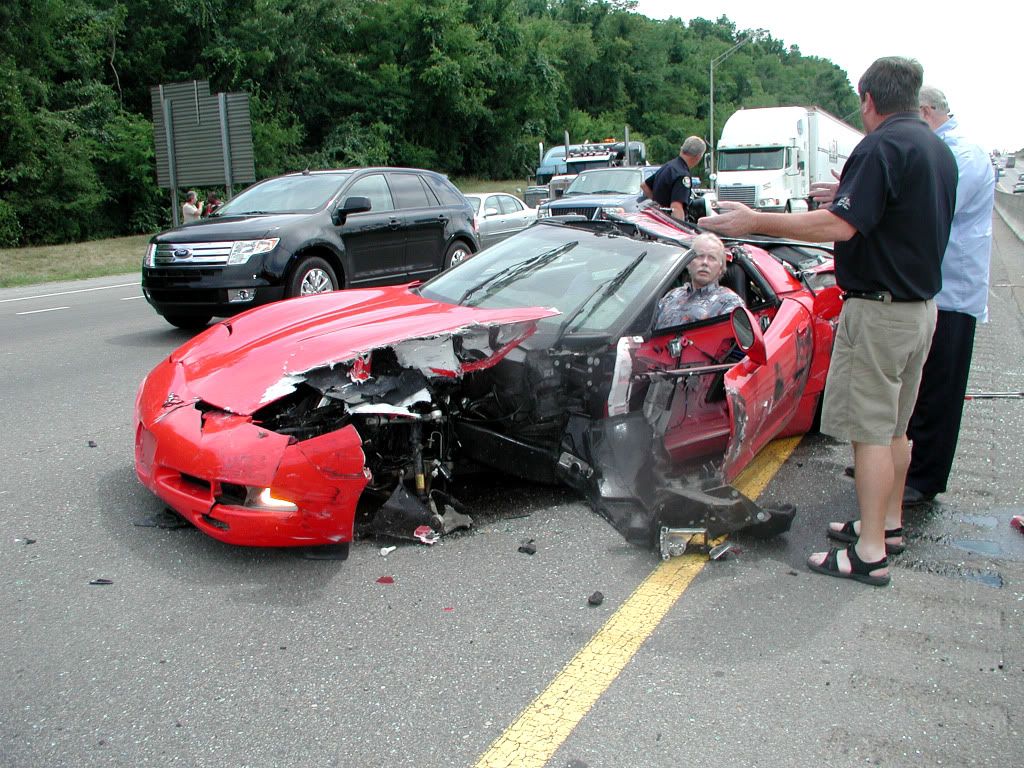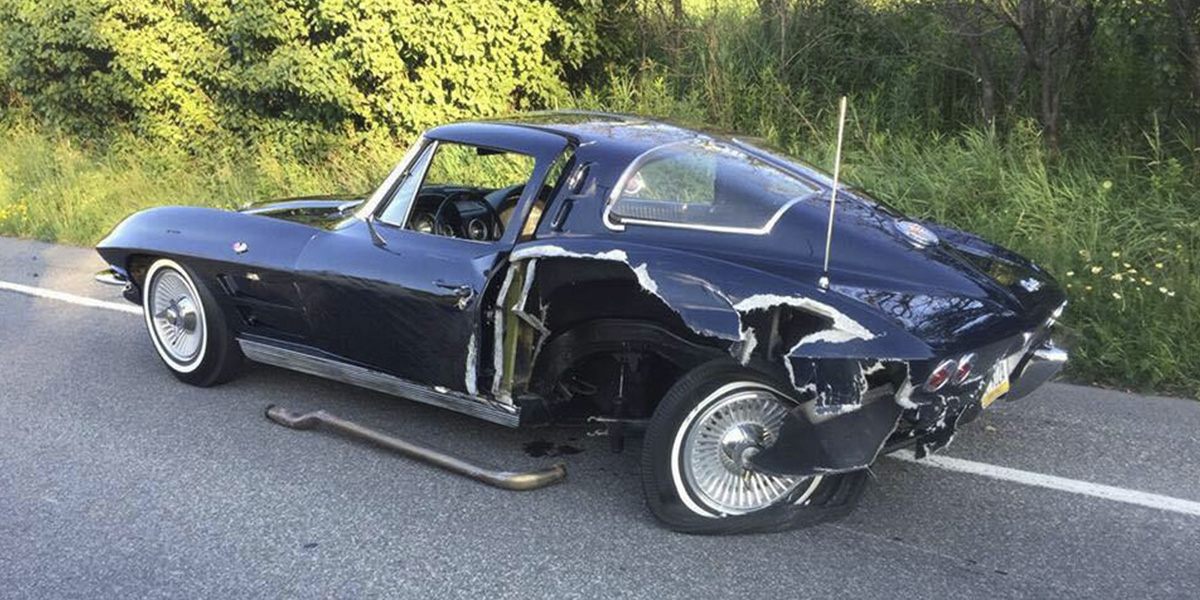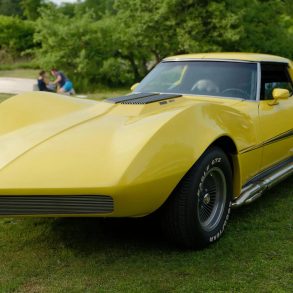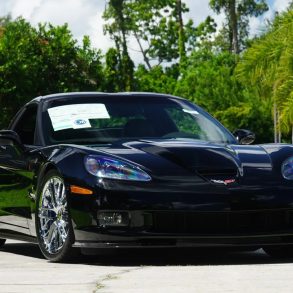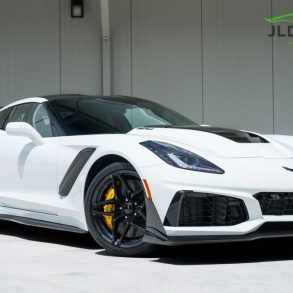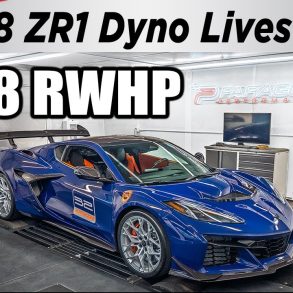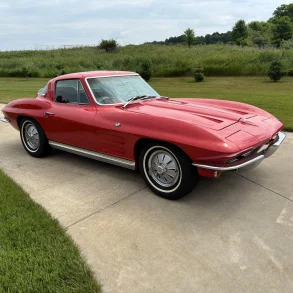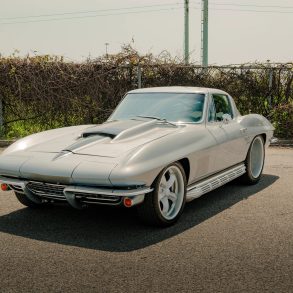The Corvette has always been a car with a lot of power, often seen as an entry-level model to the high-performance sports car segment. Stereotypically it has been associated with wealthier people, primarily men having their mid-life crisis.
Some studies suggest that wealthier motorists in more expensive vehicles are more likely to drive recklessly. The Corvette matches that description. It has arguably the highest fatal accident rate in the history of sports cars or any other car for that matter. For example, the fatal accident rate of the Corvette (Cars per Billion Vehicle Miles) is 9.8. That is almost four times as many as the average for all vehicles.
There are some theories as to why. One being that Corvette is a common choice for someone entering the high-end sports car market. And being able to afford a sports car doesn’t mean you have the skills to drive it safely. So, a car with that much power in the wrong hands is a recipe for disaster.
Another theory is that most sports cars don’t undergo many crash tests nor have safety ratings. This lack of safety research makes many sports cars four-wheeled weapons.
Like the Corvette, sports cars are not grocery getters; they are meant to be driven hard.
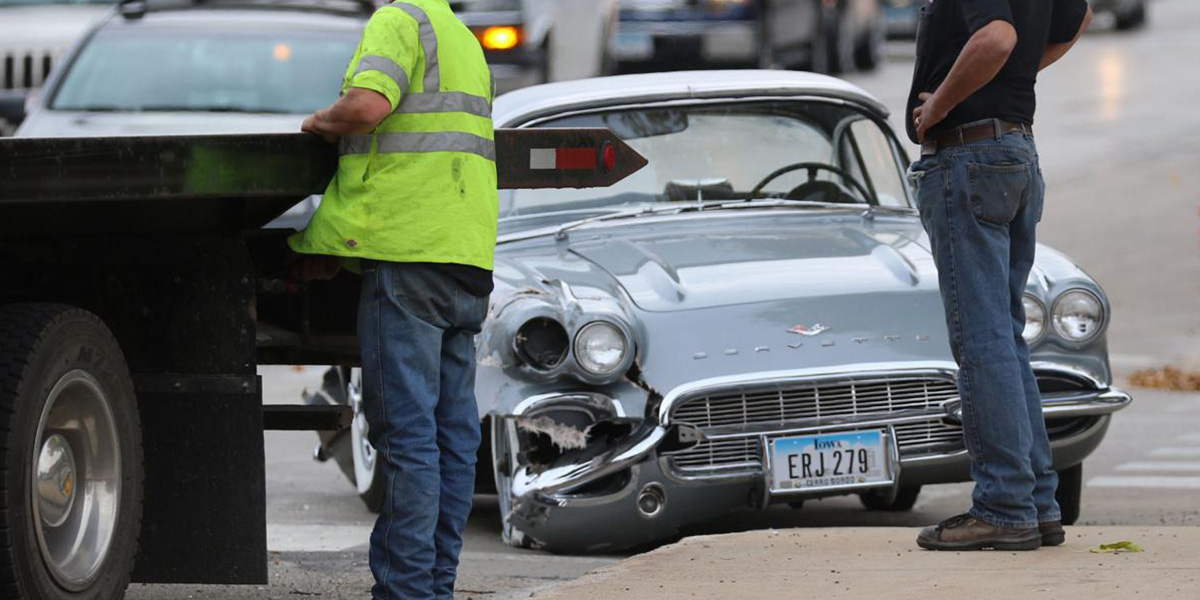
Although the Corvette historically has had a bad reputation in terms of safety, now things are different. In today’s automotive industry, the Corvette is considered one of the best-performing cars in the world.
At the end of the 90s, Chevrolet decided to return to the world of racing at a global level. However, many underestimated the Corvette Racing program. This is partly due to the stereotype of the Corvette of being a poorly built American car that could not match in terms of performance and sophistication its European rivals.
However, since the beginning of the Corvette Racing program, it has established itself as one of the most dominant competitors in the world by winning Le Mans eight times.
But beyond the success of the Corvette Racing program, Chevrolet has been transforming production Corvettes into authentic supercars. As a result, today’s Corvette not only has impressive performance figures; it has also been progressively improving its safety.
For instance, in 1973, Chevrolet featured a new mug with a body-color urethane bumper cover in the Corvette. One reason that “old-school” style bumpers were phased out is that they performed poorly during low-speed collisions (and in particular, concerning pedestrian injuries).”
Automotive Safety Milestones From 1960 – 2005
From a safety standpoint, specifically of the technology applied to road safety, we can clearly distinguish five periods in the history of the automobile. Establishing which of these periods we can associate to a specific vehicle is an excellent reference to know the security it provides. Both to avoid an accident and to protect the occupants in the event of it occurring.
Moreover, it is an ‘incremental’ technological development. In all of history, there has been no backtracking in any aspect of car safety, and improvements continue to occur, although the results are less and less dazzling.
The advances that we illustrate are responsible for most of the reduction in accident rates that the cars have experienced throughout history. Thanks to them, driving today is almost 200 times less dangerous than driving in 1960.
The first era, known as passive safety, was officially inaugurated before World War II. The Hungarian engineer Bela Barenyi introduced his non-deformable cabin concept surrounded by structures designed to absorb impact energy. There is no point in comparing the crash protection offered by the programmed crumple zones of a car today and one from the last century.
For instance, the Electronic Stability Programs (ESPs) have managed to completely banish the specter of ‘loss of control,’ ensuring that a driver can squeeze the limits of physics to the maximum. This period had its peak during the second half of the last decade, with the generalization of stability control.
Most of these safety features were not available on the Corvette for many years. However, the growing demand for safer cars forced Chevrolet to include them in the Corvette gradually.
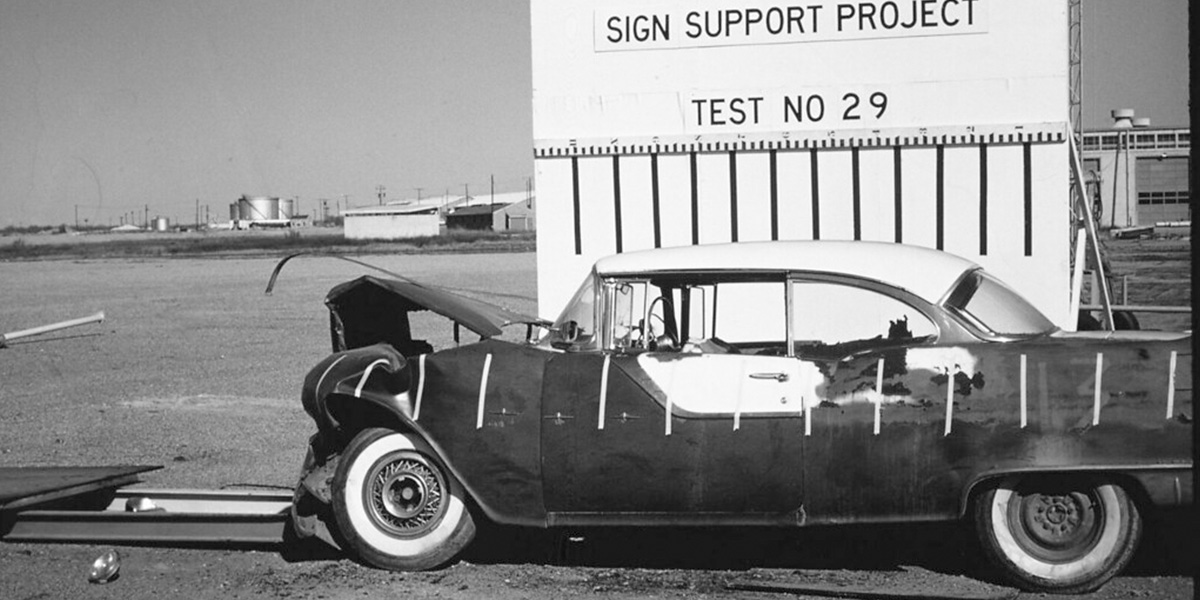
Safety Cell
The safety cell is the space in a car containing the occupants. It forms a rigid safety cage. However, unlike the crumple zones of the car body, it is not easily deformed.
It is designed to protect occupants’ survival space in accidents up to a specific force of impact.
Seat Belts
It is the primary retention device. It is mandatory in all seats: front since the late eighties and rear since the early nineties. Seat belts reduce the risk of death and severe injuries by between 40 and 65%.
Headrests
In a rear-end collision, it provides support for the head, keeping the cervical vertebrae aligned. Thus, a cervical sprain (also known as whiplash) is avoided or reduced. In the case of active headrests, these reduce injuries by 40-50%.
Frontal Airbag
Frontal airbags decelerate occupants by cushioning impact and helps keep them inside the vehicle. According to the EU, and in combination with the seat belt, airbag reduces the risk of death by 68%.
Anti-lock Brake System (ABS)
The anti-lock brake system or ABS prevents the wheels of a motor vehicle from locking in a sudden braking maneuver. Instead, ABS works by releasing and then reapplying or ‘pumping’ the brakes to the wheels in heavy braking situations.
Emergency Brake Assist (EBA)
The emergency brake assist system is a braking technology that employs visual/audible alert and automatic partial and full braking to avoid accidents.
In 2007, the EU estimated a potential accident reduction of 1,100 victims per year: up to 8% fewer pedestrians and cyclists killed and 9% fewer fatalities traveling onboard passenger vehicles.
ISOFIX
It is a universal car seat fitting system. The ISOFIX system was developed by the ISO (International Organization for Standardization) in the early nineties after several studies concluded that people did not correctly install car seats in up to 90% of cases.
Electronic Stability Program (ESP)
The electronic stability program is an electronic control that acts on the brakes so that the driver does not lose control of the vehicle. According to the EU, ESP reduces accident propensity by 22% on dry asphalt, 32% in the rain, and 38% in snow.
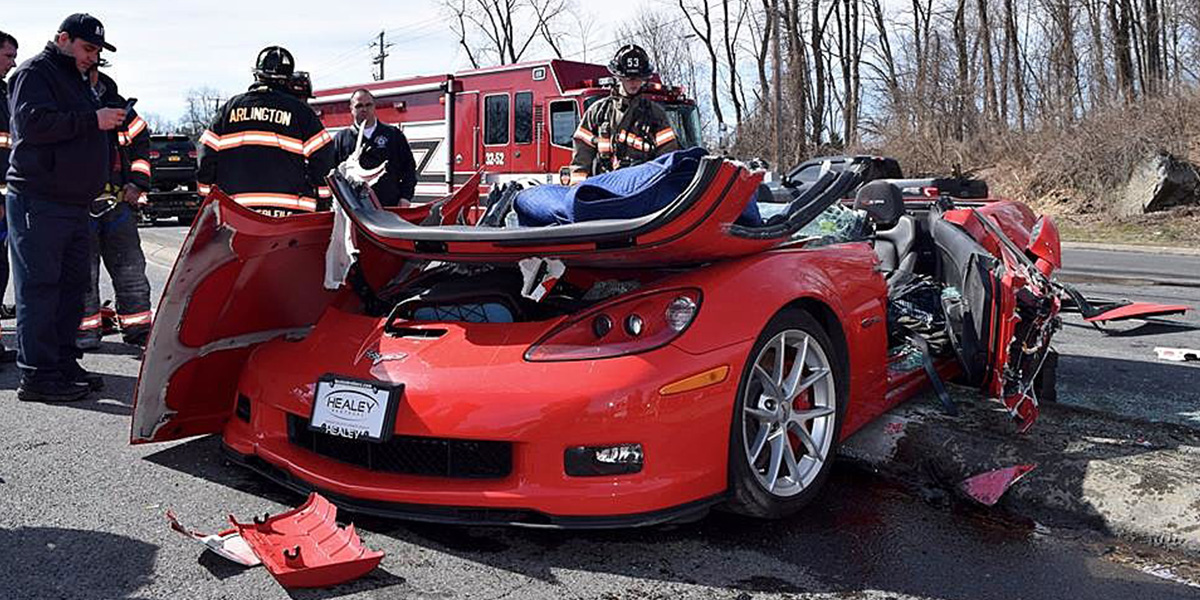
Automotive Safety Milestones From 2004 – 2014
At the beginning of the 21st century, advances in road safety began to explore the possibilities of knowing the driving environment conditions.
Thus, the era of detection begins with independent safety systems equipped with sensors that help the driver anticipate a potential accident. However, they can hardly do anything without human intervention.
Tire Pressure Monitoring System (TPMS)
The tire pressure monitoring system is an electronic safety feature in vehicles. It monitors tire air pressure and alerts when the pressure drops dangerously (25% on average).
Lane Keeping Assist System (LKAS)
The lane keeping assist system works to keep you in your lane. This feature relies on a camera detecting painted lane markings and warns if the driver drifts out the lane without using the turn signal.
Daytime Running Lights (DRL)
The daytime running lights are a relatively new feature in the automotive industry. DRL make your vehicle more visible even in bright, daytime conditions. The lights should come on automatically and operate whenever the engine is running.
Emergency Call System (eCall)
Emergency call systems can automatically alert first-responder services whenever an accident or car breakdown occurs. This service requires vehicles to include a module to detect fault conditions, provide localization, and a voice interface for communication with occupants.
Driver Monitoring System (DMS)
The driver monitoring system is a sophisticated safety feature that relies on a dashboard camera that evaluates the driver’s state in real-time. The DMS alerts the driver to regain control of the car if it detects drowsiness or distraction. In some cases, the system intervenes to take control of the vehicle if necessary.
Seat Belt Reminders (SBR)
Seat belt reminders inform the driver, visually and acoustically, if one or more seat belts are not in use. Its purpose is to ensure seat belt use in occupied places, thereby reducing the risk of injury in the event of an accident.
Autonomous Emergency Braking (AEB)
It is perhaps the most important development in car safety since the seat belt. The system monitors the road ahead and automatically brakes the car if the driver fails to respond to a collision threat.
Adaptive Cruise Control (ACC)
It is a speed control system for cars that automatically adjusts the vehicle speed to maintain a safe distance from the vehicles in front.
The Evolution Of Corvette Safety
Seat Belts
Seat belts have been present since the Corvette C1. However, these did not come as standard from the factory. In fact, for the first three years of production, the Corvette came without optional seat belts. Therefore, owners interested in this relatively new safety device had to install them on their own.
Starting in 1956, the installation and use of seat belt anchors began with dealerships offering seat belts as an accessory.
Airbags
The first Corvette to offer a driver airbag was the 1990 year model. Chevrolet also introduced a brand new dashboard design as part of the addition of airbags. In addition, they stopped using digital dashboards that had been on the Corvette since 1984 and returned to analog gauges. Either way, digital gauges were somewhat controversial and never entirely accepted by enthusiasts.
Current Generation Corvette
According to Chevrolet, the available safety features on the latest generation Corvette (C8) work together to help you avoid incidents and minimize crash damage while driving, backing up, or parking. Thanks in part to its racing program, the Corvette now has more than two decades of safety technology and innovation.
Some of these features alert the driver of obstacles with an audible alert. The driver can turn on and off most of these settings.
As far as braking and parking, the Corvette comes with an HD rearview camera that activates when the driver shifts into reverse. The infotainment display shows the area behind the vehicle as filmed from the camera above the license plate.
The rear park assist helps back up at low speeds and alerts when it beeps when approaching a detected object. It also offers a curb view camera is also for low-speed maneuvering (under eight mph). When this camera is active, the infotainment screen displays the view of the area in front of the vehicle, including a top-down image and left and right images. The cameras are activated manually through a button in front of the driver mode selector.
You can request the Rear Cross Traffic Alert if you go up to a 2LT or 3LT trim level. This feature warns you when there is traffic coming from both left-hand and right-hand sides.
Available Side Blind Zone Alert displays a warning symbol on the left- or right-side mirror when the system detects a moving car in a blind spot. In addition, the symbol will flash as an extra warning if the driver turns on the turning signal in the direction of the detected vehicle.
The available Rear Camera Mirror provides a broader, less obstructed field of view than a traditional rearview mirror. It assists when driving, changing lanes, checking traffic conditions, and turning on and off manually.
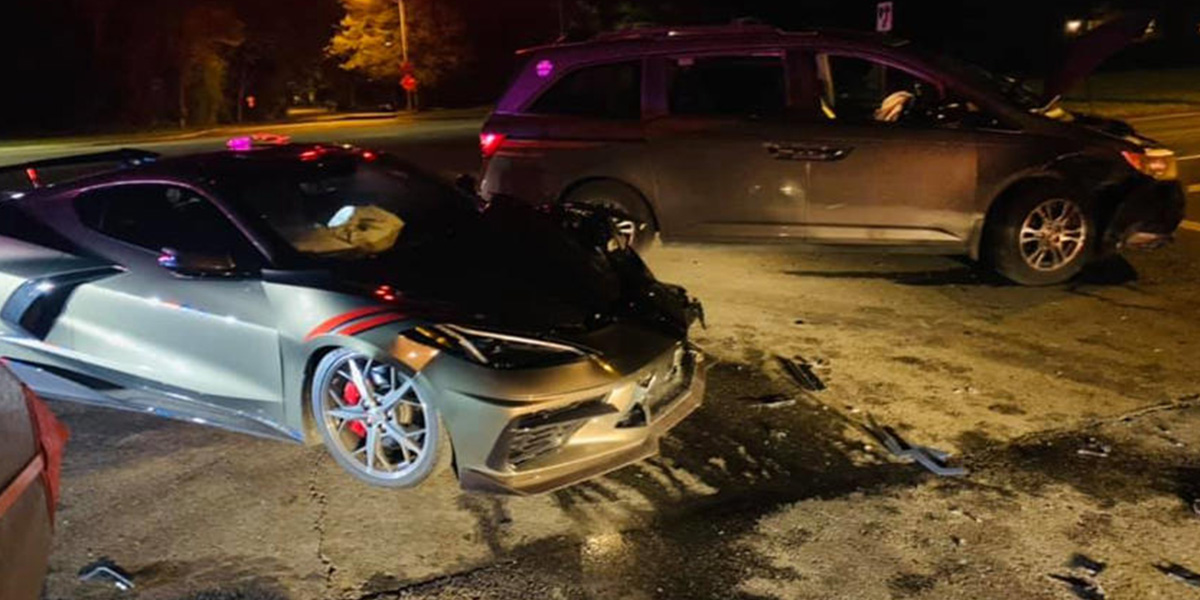
Chevrolet claims they are committed to making the best supercar they can and making it very safe.
As we can see, the Corvette has come a long way in terms of safety. Little by little, Chevrolet has redeemed the Corvette and reversed the bad reputation that has haunted the car all these years.
Long gone are the days when the Corvette was the most dangerous car on the road. It is now a supercar with a level of safety that matches the best in the business.


